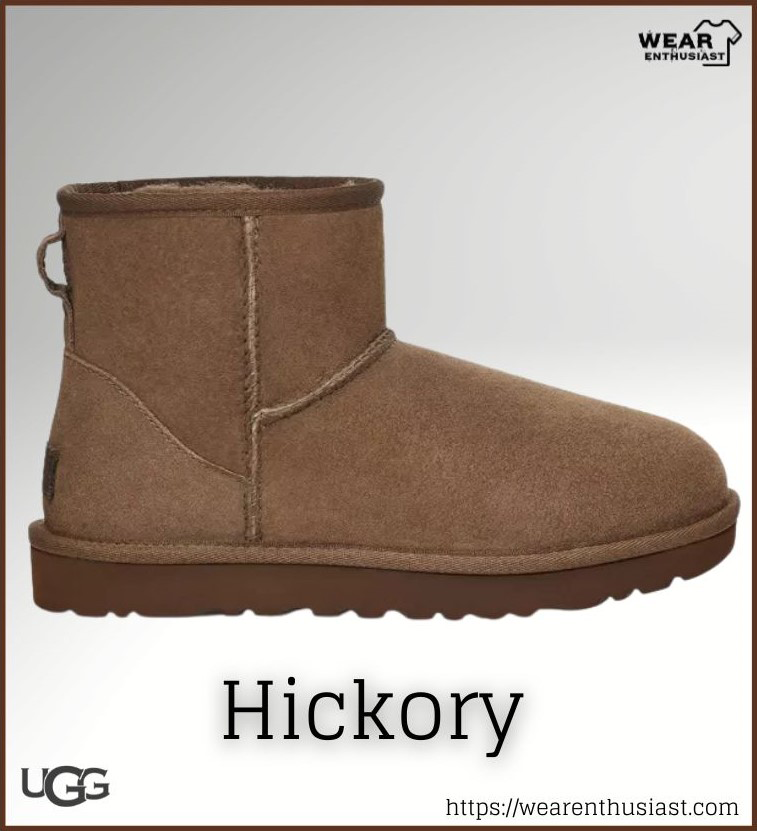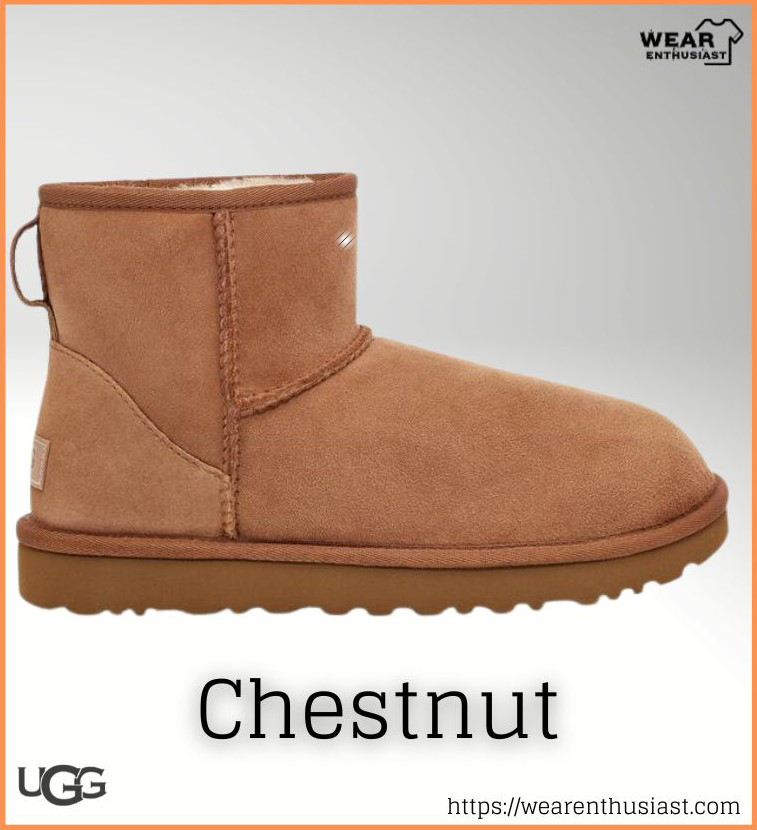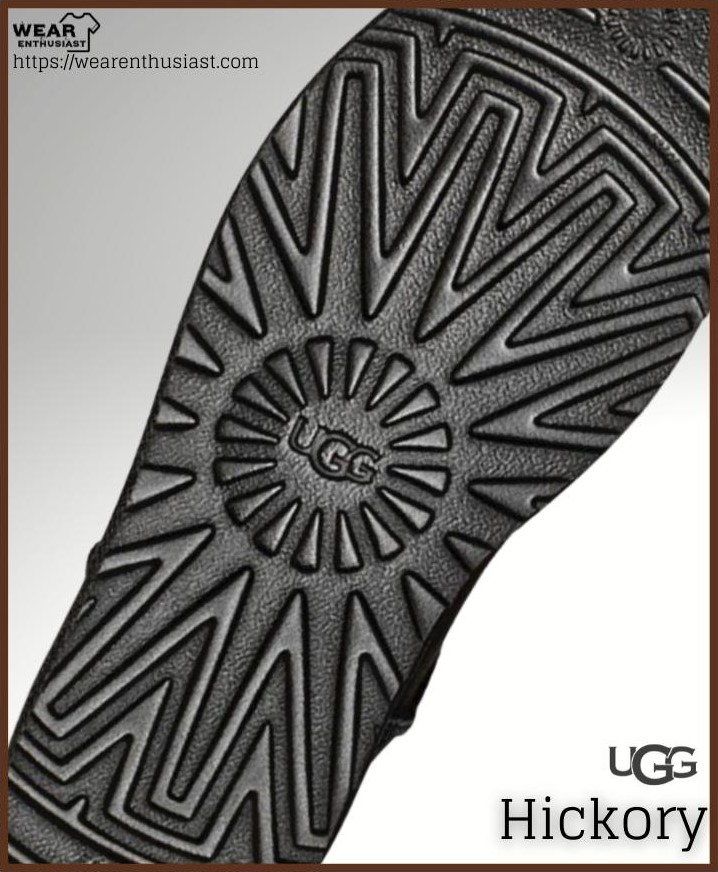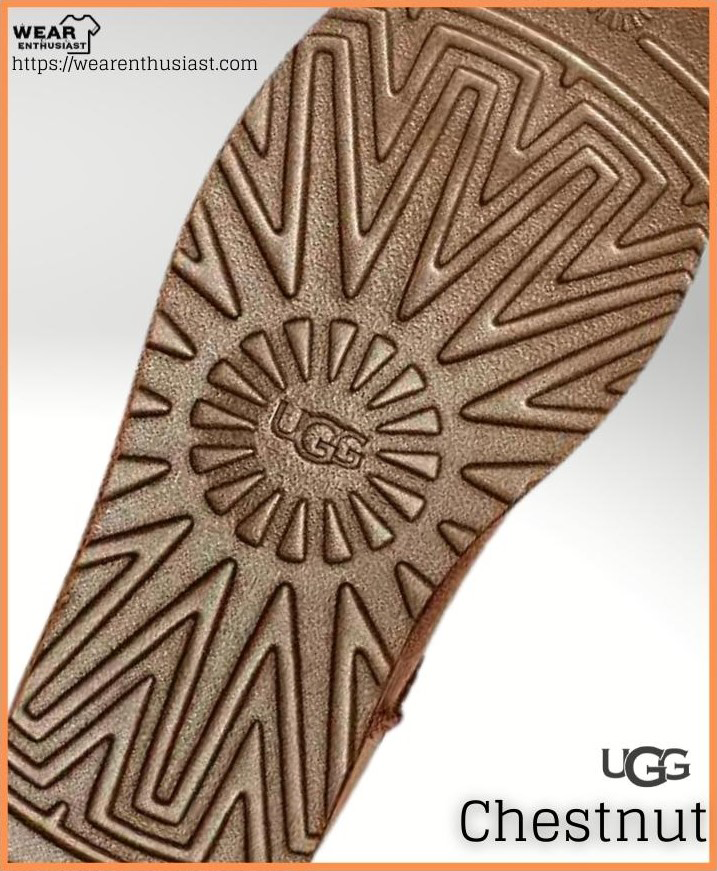
UGG makes a number of different boots, and it can be hard to decide which pair is right for you. You don’t want to spend too much or too little on a pair of boots, and you want to make sure they’ll go with everything in your closet. So, what’s the difference between the UGG Hickory vs Chestnut boots?
While these boots are the category of classic short II boots, there are a few key differences. And each boot has its own unique features that make it stand out. They have different colors, materials, and sizes. In this post, we’ll compare the Hickory and Chestnut boots from UGG.
Ugg Hickory vs Chestnut (Key Differences)
Both models are made from sheepskin originating in Australia and have a suede finish, but they have far different looks. If you don’t familiar with each style, it can be challenging to tell them apart. Here’s a quick overview of the main differences:
✒️ Appearance and Color
Hickory is a darker brown than Chestnut, with more of a red undertone. On the other hand, Chestnut is a lighter brown with more of a yellow undertone. Additionally, Chestnut tends to show dirt and marks more easily than Hickory, so it may not be the best choice for those who are looking for low-maintenance color. However, both colors are versatile and can be worn with a variety of different looks.


✒️ Shaft Height
The 305mm UGG Hickory has a higher shaft height than the Chestnut, making it better suited for cold weather wear. The 100mm UGG Chestnut has a lower shaft height, making it more versatile and suitable for cold weather wear as well as warm weather wear.
For long-leg women, Hickory will likely be a more comfortable choice. Chestnut also has a more snug fit than Hickory, so it may be a better choice for those with narrower feet. But overall, both boots are comfortable and will provide your feet with the warmth they need during the cold weather months.
✒️ Lining
Both Hickory and Chestnut boots are made from water-resistant suede and feature a sheepskin lining. However, Hickory has a thicker sheepskin lining than Chestnut, and it’s also less likely to show wear over time. Another difference between Hickory and Chestnut is that Hickory has a leather heel counter, while Chestnut doesn’t. It is therefore more durable than Chestnut.
✒️ Outsole
While both boots boast a rubber outsole with a Treadlite design, there are some key differences between the two. The Hickory has a more rugged look with its extra lacing, while the Chestnut is more sleek and streamlined. The Chestnut also has a bit more padding around the ankle for extra comfort.


In wet or icy conditions, the Hickory provides better traction and stability than the Chestnut. However, the Chestnut is lighter and more comfortable for walking long distances.
✒️ Insole
Hickory is designed for those with higher arches, while Chestnut is meant for those with lower arches. The difference in arch support means that Hickory provides more cushioning and is better for impact absorption.
Additionally, the materials used in Hickory make it more flexible, which can be beneficial for those who pronate when they walk. Conversely, Chestnut is less flexible, which makes it a more logical choice for those who need good stability. The material used in Chestnut is also slightly more breathable, making it a better choice for hot weather.
✒️ Uses
The Hickory boot is designed for use in cold weather, while the Chestnut boot is designed to be worn in warmer weather. Unlike the Chestnut boot, the Hickory boot has a fur lining that helps to keep feet warm in chilly temperatures, while the Chestnut boot does not have a fur lining.
You can also read our article on LAMO Boots vs UGGs.
Which Is Better, Ugg Hickory or Chestnut?
The answer to this question depends on your needs and preferences. In short, the Hickory is the best choice when it comes to the needs of those who live in colder climates and need a boot that will keep their feet warm. The Chestnut style would be a better idea for folks who live in a warm climate and need a lighter, more comfortable boot when traveling far.
Frequently Asked Questions
There are a few faqs that are commonly asked when it comes to UGG Hickory and Chestnut classic boots. Let’s take a look at those now:
1. What Color UGGs is Most Popular?
Chestnut is by far the most popular color for UGGs. This rich, earthy shade has timeless appeal and goes with just about everything. It’s no wonder chestnut UGGs are so popular; they’re versatile, stylish, and comfortable. But Hickory is also a popular choice, especially for those who want a more rugged look.
2. What’s the Difference between UGG Classic and Classic II?
The new UGG Classic II is a reinvention of the original Classic, which was one of the most popular UGG styles ever. Classic II features a Twinface sheepskin that has been pretreated to make it resistant to stains and water, making them a perfect choice for those who want the classic UGG look with added protection against the elements.
3. Is It Necessary to Spray UGGs before Wearing Them?
Yes. If you’re planning on wearing your UGGs in wet or icy conditions, you may want to consider spraying them with a waterproofing solution before heading out. This will help to protect the leather and suede from water damage, and it will also make it easier to clean the boots if they do get wet.
Conclusion
Overall, UGG’s Hickory boots as well as their Chestnut boots are both great choices depending on your needs. If you’re looking for a boot to keep your feet warm in the cold weather, then the Hickory is the better choice.
If you’re looking for a more versatile boot that can be worn in both cold and warm weather, then the Chestnut is the better choice. Whichever boot you choose, you can be sure that you’ll be getting a high-quality product from UGG.

